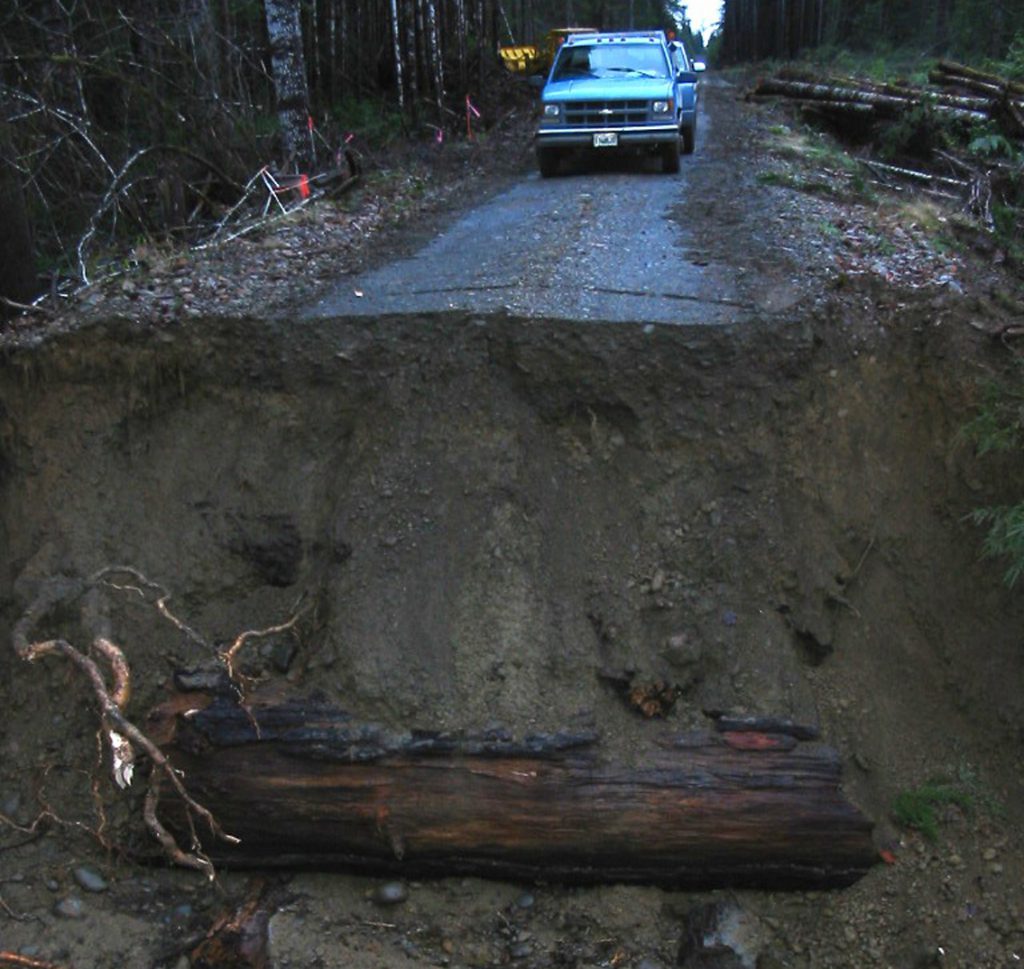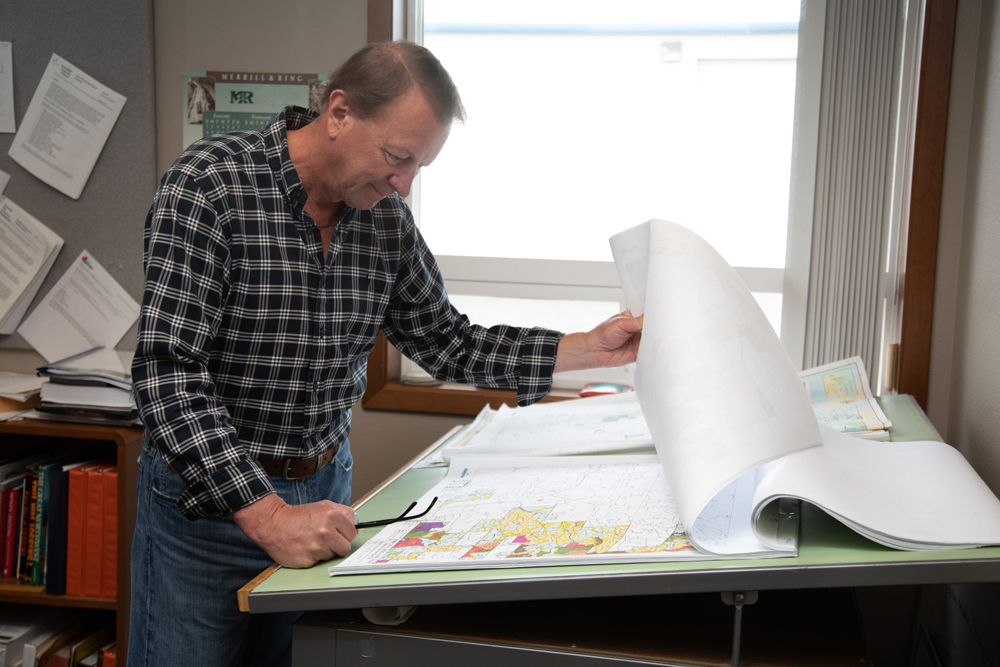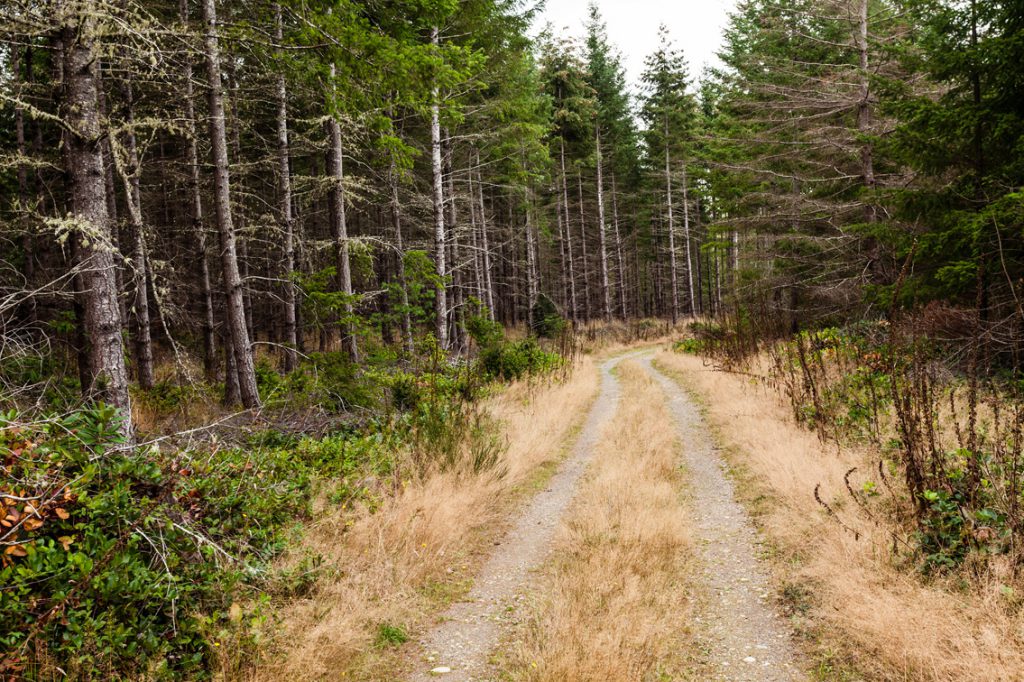Is forest management the key to drastically reducing wildfire risk? An Oregon firefighter shares how managed forests make fighting a wildfire less risky for firefighters AND the communities nearby in the second installment of our wildfire prevention series.
Michael Robison has spent nearly a half century fighting wildfires in western Oregon.
His life has been dedicated to protecting people from devastating fire—and that includes protecting fellow firefighters.
Michael, the District Manager of Coos Forest Protective Association (CFPA), talked to us about the very different experience firefighters encounter depending on the conditions of the forest the fire is in. CFPA is a private, non-profit association based in Coos Bay, Oregon. It provides fire protection services to private corporations and private, state, county and federal lands.
His story starts with an aspect of forest conditions that has to be addressed long before wildfire season: access.
The surprising ways roads prevent and stop wildfires
Michael emphasized the under-appreciated role that well-maintained road systems play in preventing and stopping wildfires—both as fire breaks and as critical access points.
In forestry companies like Rayonier, forest roads are maintained in order to support forest operations, such as planting, monitoring tree growth, thinning, and harvests. These roads can be utilized for fire suppression if necessary.

Other types of forests may not have the same level of accessibility.
“Access is key. With unmanaged forested land, you’ve got road systems that may or may not be viable,” Michael says.
“Over the last 3 decades, the government has invested millions of dollars (to repair) roads that are falling apart due to the lack of active management. Those roads allow us a foothold to where there’s a fire on the landscape, so we can start anchoring and putting the fire out.”
Properly maintained roads also serve as fire breaks, which can literally stop a ground- or surface-based forest fire in its tracks. Who knew how important logging roads were after all?
Why managed forests reduce risk for the firefighters and communities around them
In addition to the advantage of well-maintained roads, Michael, who has served the public and private sectors as a firefighter since 1975, says there are many other aspects of forest management that enable firefighters to access and control a fire sooner. This reduces the likelihood a fire will get out of control, reaching the communities around the forests.
Working with foresters who know their land base well can help firefighters access the fire and a water source quickly, Michael says. For example, Rayonier foresters regularly visit the properties and have detailed GPS maps of our ownership, including roads, water sources and important information like the properties’ topography.

Our foresters and many of the loggers we work with are also trained firefighters, and during firefighting season they bring their gear with them to work. That means there are extra hands already in the woods with firefighting knowledge.
“That’s a workforce we can pull from to help suppress a fire,” Michael says.
In fact, our foresters assist local firefighters not only with fire incidents on our own land, but also on neighboring properties. Since they’re often already in the forest, sometimes a forester or logger is first to arrive at the scene with their heavy equipment. They can begin plowing fire lines immediately and communicate with firefighters about the location and extent of the fire even before they arrive.
“Night and day difference” for firefighter safety
Managed forests have less older and dead trees, which are highly flammable and burn at a high intensity. Dead trees and limbs can also create barriers to reach a fire.
“If we have a fire in an [unmanaged] stand, before we can take care of it, we have to first go in and remove hazardous snags with tree fallers. Then crews need adequate water as they build a line without necessarily good road access,” Michael explains.
For all of these reasons, he says, “From a firefighter safety standpoint, there is a night and day difference between putting out a fire in managed stands vs. unmanaged stands.”
Not all forests can be managed the same way. For example, a federal park would never be managed like a timber plantation. However, there are methods to improve the accessibility of every forest—and it can have a major impact in an emergency.
Bottom line: managed land typically means easier, safer conditions for wildfire response, making firefighters more likely to safely and quickly extinguish a fire before it gets out of control.

Also in our Forest Management series:
Story #1: How Forest Management Prevents Forest Fires. Rayonier foresters, who are also trained firefighters, share how forest management reduces wildfire risk. They explain the ways foresters prevent wildfire and why healthy tree plantations are less likely to burn out of control when fire does break out.
Story #3: Preventing Wildfires and Protecting the Environment Together. Firefighters, foresters and loggers each play a role in preventing and responding to wildfires. Interviewees discuss how technology has impacted wildfire response, the role of forest management in climate change, and how the forest itself adapts to fire.










Leave a Comment